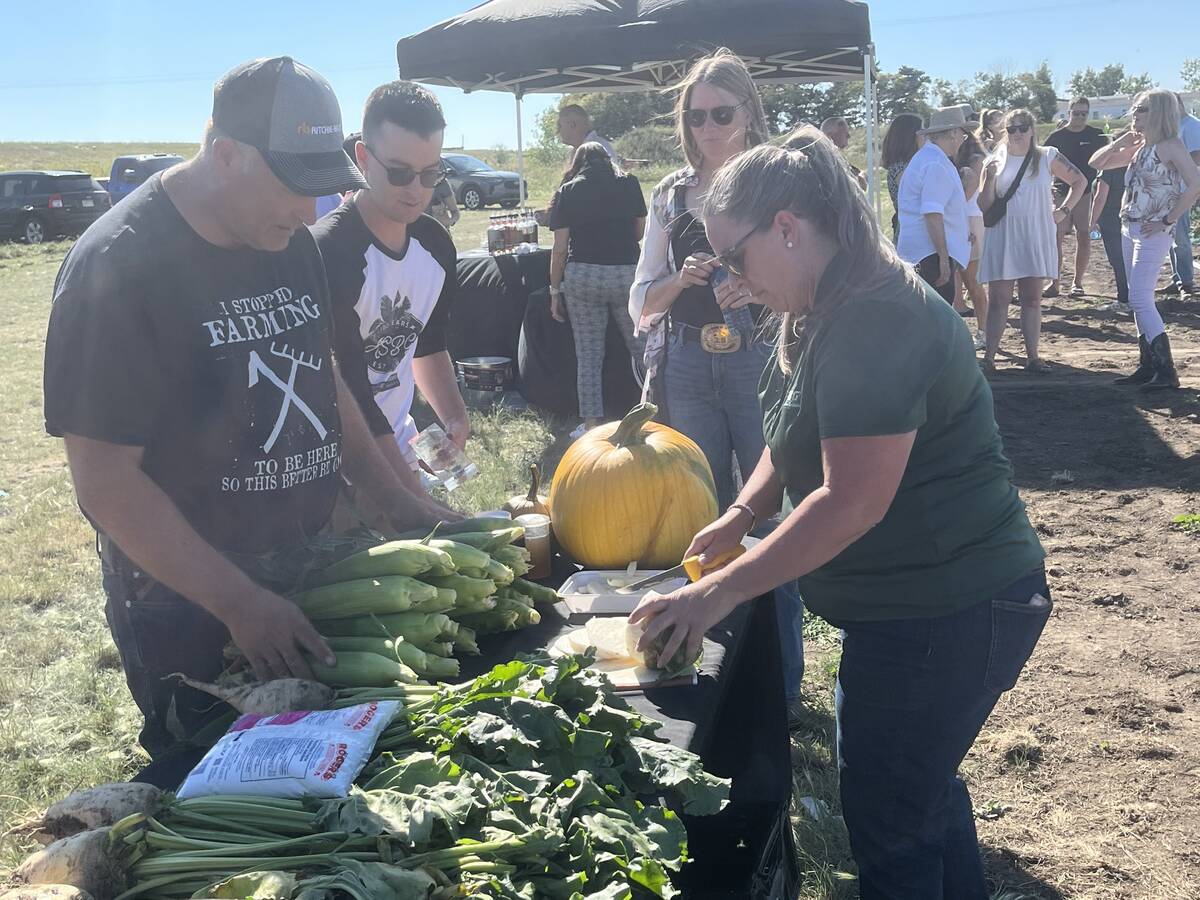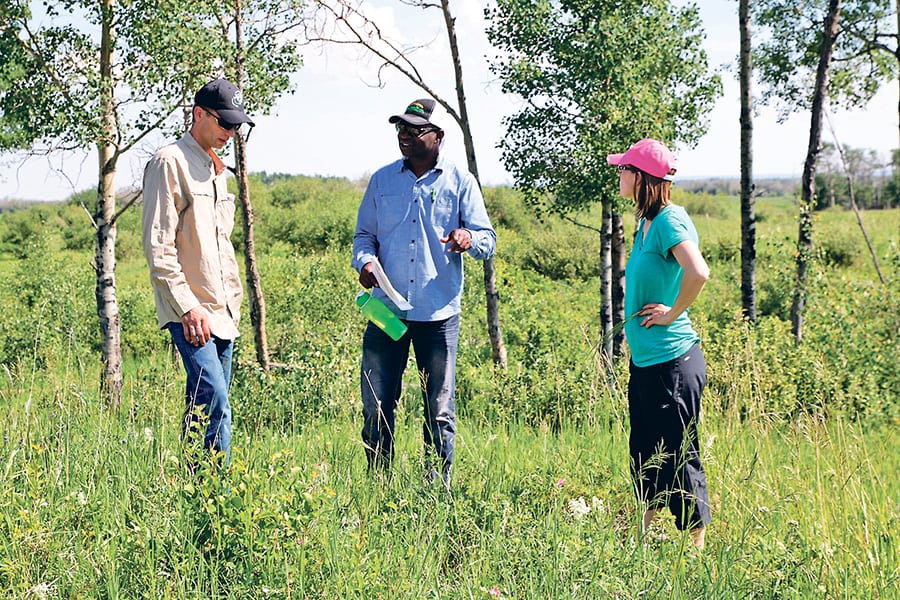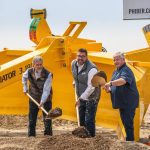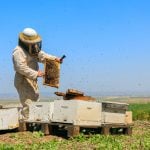WANHAM, Alta. — Ranchers aiming to improve their pastures should look to bale grazing, rotating cattle more often in tighter groups and applying manure in conjunction with deep tillage, suggests new research out of northern Alberta.
The research, published last April and led by Akim Omokanye, looked at how producers could improve their land cost-effectively without having to break and re-seed. Breaking includes plowing, discing and harrowing.
“According to what we found last year, it costs a minimum of $260 per acre to break and re-seed and the producer would lose a whole year of production. That’s challenging,” said Omokanye, the research co-ordinator at the Peace Country Beef and Forage Association, following a field tour near Wanham, Alta., last month.
Read Also

Alberta farm lives up to corn capital reputation
Farm to Table Tour highlighting to consumers where their food comes from features Molnar Farms which grows a large variety of market fruits and vegetables including corn, with Taber being known as the Corn Capital of Canada.
He said researchers looked into this because many pastures have become less productive over time, whether that’s through being used more heavily, receiving less rainfall or being inundated with weeds and pests.
Researchers applied different pasture-improvement techniques to field-scale plots in 2015. They collected data from those plots in 2016 and 2017.
They found bale grazing was best at improving yield. The method saw yield jump by 100 percent at one site and spike by 219 percent at the other site. Improvements from bale grazing could last for years.
But when the cost of bringing in and hauling hay was taken into account, researchers found bale grazing was more costly than breaking and re-seeding.
With hay costs included, marginal returns for this method were -$795 per acre. Without those hay costs, the return was $68 per acre.
Manure application with deep tillage was second best for yield improvement, followed by breaking and reseeding, high-stock density grazing, and then fertilizer applications.
While high-stock density grazing will differ for each producer, Omokanye said grazing 150,000 to 200,000 pounds of cattle per acre, rotating them several times a day, would be a preferable technique.
Once the cows are moved, he said the pasture should be left to rest for the remainder of the year. If possible, ranchers should leave about 50 percent of the forages behind when moving to the next paddock.
“We just advise they don’t graze it all the way down,” he said.
As for manure and deep tillage applications, he said that could come in handy for producers dealing with soil that’s highly compacted, an issue that’s well known in the Peace region.
Deep tillage can make more nutrients available. He said the effects of that could last for years.
Marginal returns for high-stock density grazing were $41 per acre. Manure and deep tillage applications saw returns of $15 per acre and breaking and re-seeding had a return of -$56 per acre.
Omokanye is currently working on a separate project looking at other techniques that could potentially benefit pastures. The techniques include aeration, fertilizer applications, and glyphosate applications followed by direct seeding of a mixture of grasses and legumes.
So far, he said the glyphosate and seed method is showing the best results, though the research team still has to determine the costs of doing that. Those findings are expected to come out later this fall.
















